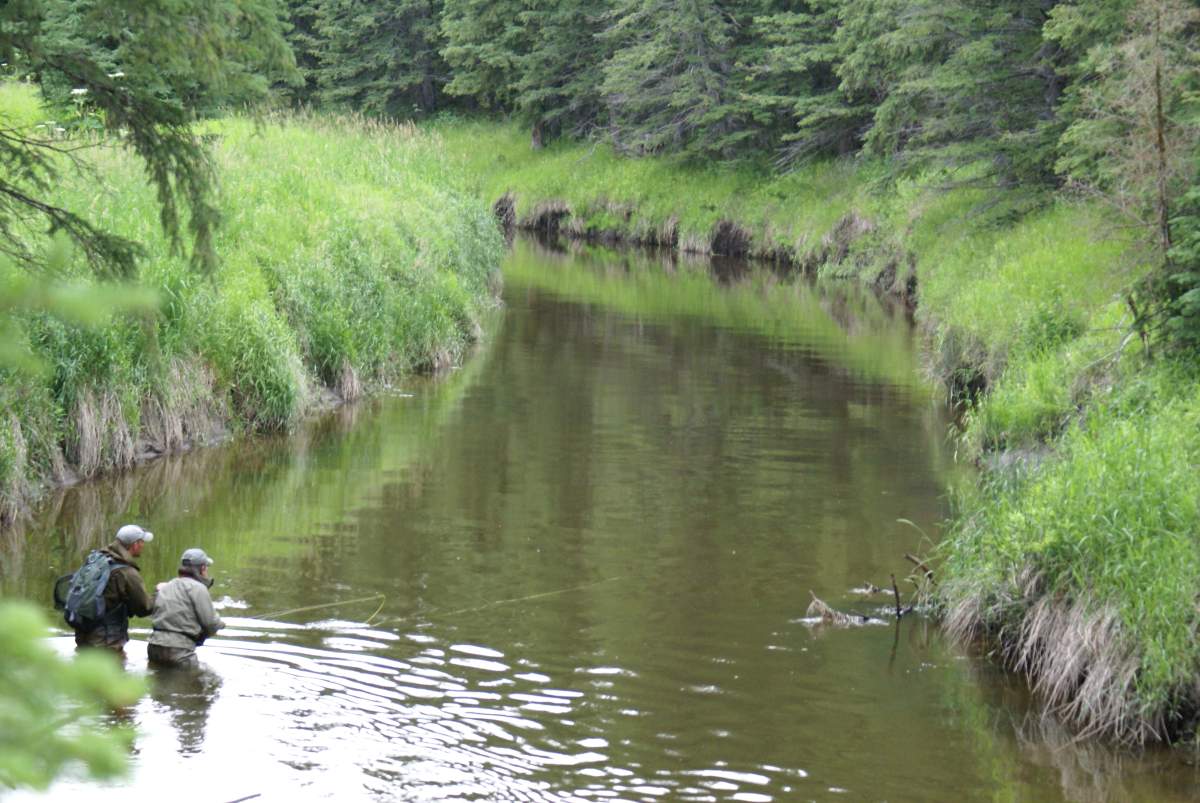One of Alberta’s largest grassroots conservation groups is to plead this week for the protection of a much-loved river from gravel mines it fears would damage a world-class trout fishery and undo years of work.

“We have an environmental marvel of a river,” said Victor Benz of the Alberta Fish and Game Association. “Now that we’ve created this wonderland, I think we should take the effort to protect it.”
The North Raven River in west-central Alberta is the province’s largest readily accessible spring-fed river. Its waters teem with brown and brook trout, its banks with deer and moose, and its shores with birds.
Fifty years ago, it wasn’t so. Its banks were trampled and overgrazed, its headwaters muddy cattle watering holes.
A group of local anglers recognized the potential of the river’s clear, clean water that runs at an even temperature year-round.
Starting in the mid-’60s, volunteers and contractors began rebuilding and fencing the banks, designing watering troughs for cattle. A streamside corridor was rented from landowners. The four main springs were cleaned and protected.
The work took thousands of hours and cost about $10 million, Benz said.
It paid off.
A 2019 survey by the Alberta Conservation Association found 1,600 trout spawning beds, most in a stretch less than 10 kilometres long. The North Raven is now considered one of Alberta’s best fisheries and has spawned ecotourism that Benz said is worth about $750,000 a year.
However, the aquifers that feed the springs are comprised of valuable gravel. The commodity has long been mined in the area, but in November 2019 Red-Deer-based Border Paving held a public meeting at which it described plans for two new mines that would dig below the water table a few hundred metres from the springs.

Get breaking National news
Those plans to go below the water table for the first time since the 1960s threaten the river, said Benz.
“You can’t help but create a water pit. You change the nature of the aquifer.”
Such pits, he said, create warmer, more oxygenated water that mixes with groundwater flowing into the river. That chemistry could mobilize substances locked in the rocks such as chromium, a toxic heavy metal present in the area.
Mixing pit water and groundwater could also make the river siltier and less fish-friendly. At worst, pits below the water table could shift the springs.
“It’s entirely conceivable that the existing springs will shut down and new springs will open up somewhere else,” said Benz.
Border Paving has not applied for permits with the local Clearwater County or the provincial government, and the company was unable to provide a spokesperson.
Benz said company officials have told him they plan to run an “eco-friendly” operation. He said they told him in September a decision would be made within months.
On Tuesday, the fish and game association is to ask county council to create a 1.8-kilometre buffer around the springs that would block mining below the water table.
“We’re asking the county to consider the effort that has been put in, consider the environment that was created by that effort and to recognize that it is a significant income draw for the county.”
He said the buffer idea has support from 19 of 29 landowners who would be affected.
County staff are unconvinced.
In documents presented to council, they say that the association hasn’t received consent from all property owners. County staff also want to see more research on groundwater specific to the area to determine the need for a buffer.
The documents are also concerned about precedent.
“It would sterilize a large area of the county for gravel extraction,” says advice to council. “It would also open the possibility of redesignating similar areas within the county, further sterilizing additional lands.”
It recommends council refuse the request.
Benz points out the association is only asking for a ban on mining below the water line. If the request is denied, his group will be back once an application is filed, he said.







Comments